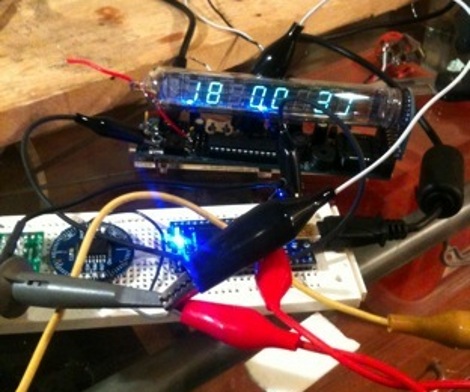
Not content with only knowing the time, [trandi] decided his Vacuum Fluorescent Display clock would be much better if it displayed the weather and a Twitter feed.
[trandi] received a Lady Ada Ice Tube clock last month. The kit went together almost too easily. Now he had to, “make it connect to other ‘stuff’ and display some custom messages.” After playing with the firmware to display a Hello World, [trandi] mucked around with the GPS mod and figured out how to add scrolling text over a serial connection.
A serial connection to an Internet-connected computer is all well and good, but [trandi] really wanted a stand-alone solution. A tiny WiFi to RS-232 board was sourced and the work of getting a clock on the internet began in earnest. After a weekend was wasted trying to debug the HTTP mode of the WiFi board, [trandi] gave up and used TCP mode with manually constructed HTTP headers.
The clock gets the current weather and a Twitter feed. To one-up to the Ice Cube GPS mod, the clock now sets its own time from the Internet. Check out the video of [trandi] showing off his Internet clock and fine collection of single malts after the break.











